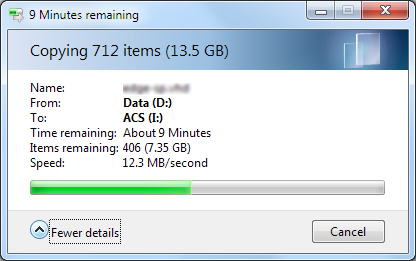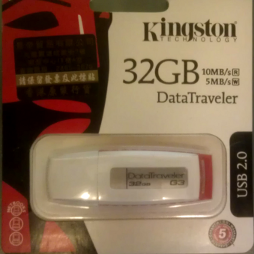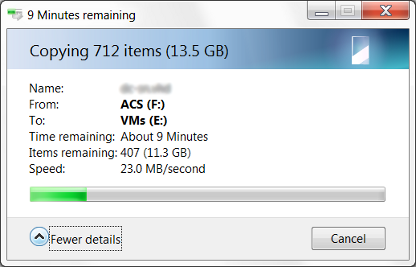I recently bought a 32 GB USB drive. Not for small files of course (it would be a bit big for small files), but for carrying with me some large Virtual Machine images. (For an explanation on what virtual machines are, see wikipedia, but it’s not important for the story.) I did not want to spend too much money, but I did want a reasonably fast one, since I would be copying huge files (around 10 GB each) onto it. The shop had really fast ones (with speeds specified to be 20 MB/s), that were also really expensive. In the end I decided to go for the cheaper, mid range, Kingston DataTraveler G3. As you can see on the picture of the packaging, it should be able to write with 5 MB/s, and read with 10 MB/s. Not that fast, but fast enough for what I wanted to spend. I took into account that “they all lie” about this kind of specs. Those speeds are the ones you only achieve under the most optimal circumstances, etc.
I was pleasantly surprised when I saw the speeds reported by Windows when I was copying my large files:

Writing to USB
So both reading and writing speeds exceeded the promised specs by almost 150%! So why would they do that? Why would Kingston promise less than they deliver? That’s not the marketing communication I’m used to seeing, especially not from electronics brands. However, it actually strengthens your brand when you deliver more than you promise! I was pleasantly surprised and will strongly consider Kingston for my next USB (which will probably be about 4 times bigger). All in all it did not harm Kinsgton to lie about the specs. And well, it made me blog about it and spread the word…

